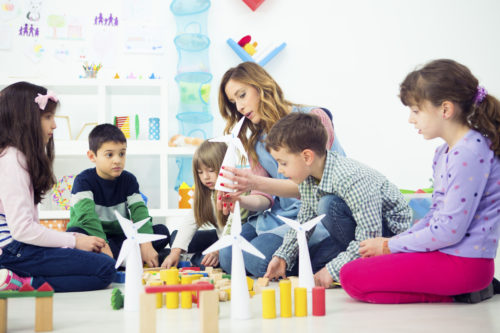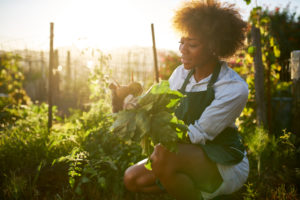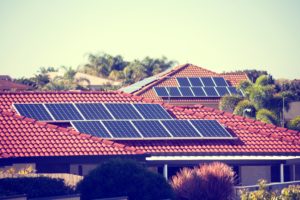Handmade Goods & Sustainability in Small Towns
Handmade goods are what sustainability is all about. Art, decor, and crafts made by hand are intrinsically gentler on the environment in these ways:
- Constructing a product with your hands uses less energy and less material waste.
- Craft-making uses less energy in the production phase as well as in the tooling necessary for the product.
- Generally, handmade crafts use natural materials, not plastic.
- Since the product’s construction is local, it usually sells locally, as well. Staying in your community cuts out the need to transport the article, which results in fuel saving.
- Small shops located in small towns or cities lessen traffic congestion, sprawl, and pollution.
- Locally-owned businesses create communities that enjoy more prosperity because they recirculate more dollars in the local economy. The result is more locally-owned supply chains and higher wages for employees.
- Handmade crafts are made to last.
- In 2019, artisans can express their passion, skills, individuality, and their love. The aspects of this kind of freedom and joy are critical for sustaining happy, well-rounded human beings.
How to Teach Children about Sustainability
Guiding children through the process of authentically understanding what sustainability is all about begins their journey into acknowledging the footprint we all leave on our planet. And yes, most young ones can comprehend that what we do now will affect future generations.
One education theory is that children are active learners who can set goals, plan, and revise. Therefore, art projects, outdoor hikes, recycling efforts, and making crafts from used or natural materials is an excellent way to help young ones understand the sustainability concept.

Fun Activities & Community Awareness
Here is where the understanding of the importance of protecting the environment connects to hands-on projects that are imaginative, fun, and effective.
Recycle
Obtain or make recycling bins together with children. Label the containers, so each material goes into the correct receptacle. Making recycling a smooth process is the secret to sticking with this task.
Plant a Garden
Growing your food saves money because you do not have to pay for the shipping, taxes, and rising prices of what you usually purchase at the grocery store. Learning how to plant a garden is a skill that will stay with children for the rest of their lives. Begin growing slowly and expand as you learn more about fertilizer, using recycled water, and composting.
Composting
Teach kids that some items that land in the garbage are compostable. Leftover food items decompose into highly fertile soil. There are many projects available for making compost bins.
Art Projects
The number of art activities that utilize what some might call trash is endless. A few examples include:
- Using leftover yarn, fabric, paper to make collages or wall hangings
- Recycling plastic milk jugs into colorful lanterns
- Gluing tissue paper scraps on a glass object to make “stained glass” windows
- Turning old scraps of wood into fairy houses
Technology & Your Small Business
In any community, programs exist that make a positive impact, but these organizations are often all but invisible. How can a small business that is concerned with the state of the Earth’s environment make money, get noticed, and change the world?
Marketing
To develop a constituency of support in your community you need a clear communications plan. Your support groups depend on ensuring that individuals know you exist, know you personally, and know what projects, actions, and activities taking place at your business.
- Communicate your overriding goals.
- Discover why sustainability matters to your customers.
- Know your clientele and what is important to them.
- Know your customers’ tastes, values, ages, locations, and more.
- Know why sustaining the planet is something your customers want so you can create a message that drives them to further action.
- Use marketing channels to get your message out to your base.
Connect with Like-Minded Individuals
Attend sustainability events. Form co-promotional partnerships. Find content providers who can spice up your social media and website communications. Look for social media opportunities that match your message, your audience, and your methods. Research to find the channels your customers use and make the message you send one that will motivate them.
Use Real-World Issues to Connect with Others
Tie your sustainability issues into what is happening in your town, nearby cities, and your state. Learn more about the garbage procedures, poor infrastructure, and unacceptable housing in your area and cite sources that back up your insights.
Also, remember to work on sustaining your business. Businesses that are sensitive to the environment and are doing what they can for the world need to remain open and thriving. Continue to market, communicate, and teach.

Craft Businesses with Sustainability at their Core
It’s always conscientious to follow businesses like yours that are successfully blending artisan efforts with sustainability. Here are some that are doing that well:
Alabama Chanin
This fashion-centric store takes sustainability to the next level. From seed to fabric, the designers produce 100 percent cotton fabric for its clothing line and repurposed and reclaimed materials in their clothing and home goods. The owners also offer The School of Making, a research body for new ideas and new methods for disseminating information.
Bloomin
This business is the original manufacturer of hand-made, recycled, seeded paper. You plant the paper-covered seeds, the plant inside grows. The recycled paper goes through a coloring process with all-natural, vegetable inks in the business’ solar-powered facility. The company works closely with the United States Department of Agriculture.
Luke’s Toy Factory
This toy store sells items made from sawdust reclaimed from U.S. furniture makers. This repurposing enables the team to use less plastic and to recycle pounds of sawdust that would otherwise burn.
Your local environmental support agency would like to know about your business and products. Let your community see the much-needed work you do.



